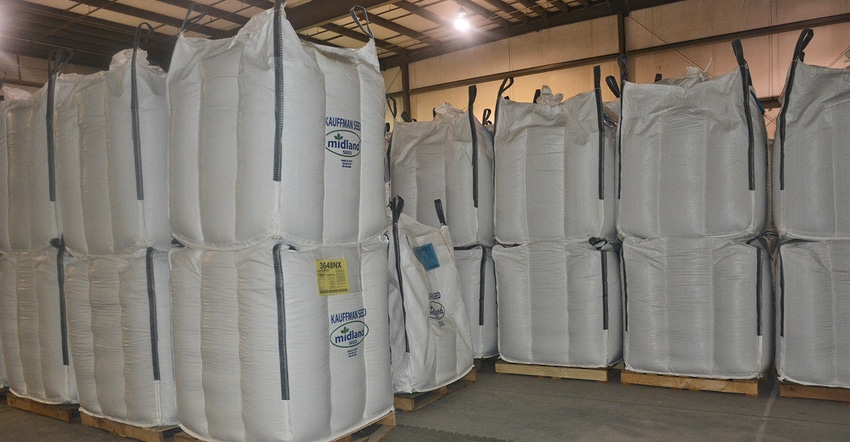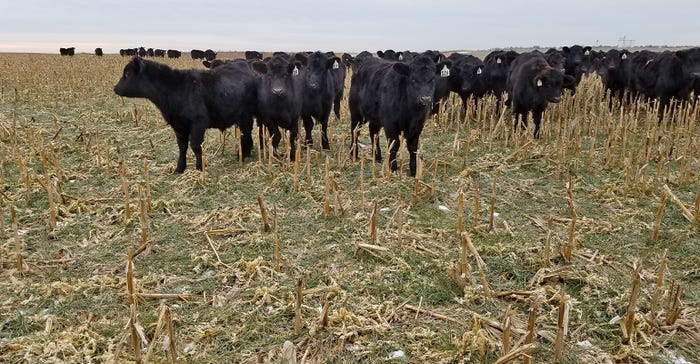
In most years, planting decisions are pretty much cut and dried: Just follow the rotation.
For many farmers looking at the coming spring, the process is a little more complicated. A year of wild weather has disrupted the rotation cycle in much of the state, leaving producers wondering what to do this year and next to try to get their “normal” back.
“It’s just been a crazy year. A lot of people are just starting where they left off a year ago, looking at putting in whatever they didn’t get in the ground last year because of all the flooding and the prevented planting,” says Tom Clayman, co-owner of Kauffman Seed at Haven. “They are just trying to piece things together and get back to a normal rotation. The one thing that is consistent is that everybody needs more money than they have to get this year off to a good start.”
Wheat acres down
Clayman says wheat acres in his trade area are noticeably down, driven in part by continued low prices and partly by weather.
Sedgwick County farmer Mick Rausch says that’s true of his operation. “I have the least wheat I have ever planted this year,” he says. “The prices have just stayed too low. And I have fields that need terrace work because of all the washouts last spring and there wasn’t time to get that work done to plant wheat.”
He says his acres of soybeans will be up and he plans to plant more milo this spring.
“Last fall, I started out having fun cutting 100-bushel milo. Then the winds came and took it down. I tried dropping the header to try to pick it up, but there was a lot of shattering in that stuff flat on the ground. But I’m getting back into cattle and there are some pretty happy steers out there on that milo ground.”
Clayman says he knows of producers who simply planted what they could, when they could.
“There were guys who were late trying to get rye or oats in. Most of those people have gone back and grabbed supplies and planted whatever forage they could. Hopefully, by the middle or end of February, we’ll see a lot of green out there as those crops get up and growing,” he says. “There are people who are probably going to go beans on beans or put in a third year of corn just to get back to their rotation. It will take a couple of years to get the cycle back to where they want it to be.”
 DISRUPTED ROTATIONS: The most reliable predictor of spring planting — rotation — was seriously disrupted in 2019 as spring flooding kept many fields under water well past the planting date for corn and cotton, forcing many farmers to plant shorter-season crops such as milo and soybeans.
DISRUPTED ROTATIONS: The most reliable predictor of spring planting — rotation — was seriously disrupted in 2019 as spring flooding kept many fields under water well past the planting date for corn and cotton, forcing many farmers to plant shorter-season crops such as milo and soybeans.

He added that most producers in Kansas are luckier than their counterparts in other parts of the country.
“In the Dakotas and Minnesota, they are still fighting weather and a lot of people are out there harvesting corn in the cold and snow,” he says. “I know one guy in the Dakotas who says he had 2,600 acres of corn still to cut in January. That’s not a lot of fun.”
Grabbing opportunity
Kauffman seed salesman Todd Miller says he has seen more producers taking advantage of whatever opportunities arise.
“Last year was just so full of challenges that people were coming in looking for ‘whatever will grow’ and planting it as they could,” he says. “That especially true of people who are trying to feed livestock as well as raise cash grain crops.”
Marion County farmer Paul Penner says he often shares data with a neighbor when thinking about altering rotations or adding new crops to the mix.
“We’ve talked about adding canola or sunflowers to the mix,” he says. “It’s a big decision to change what’s in your normal rotation. Managing pests and fighting resistance count for a lot in making decisions. We’ve talked about cover crops but in this area we don’t have the benefit of steady rainfall. If I has planted cover crops last fall and had them growing, I’d be using up the moisture that I need next spring for a cash crop. And anything that hinders my ability to get the most I can out that cash crop isn’t something I want to do.”
Penner says that it would be a different matter if he had livestock in the mix and needed a forage crop for cattle feed.
For operations such as his that are primarily or totally grain production, managing for the least amount of red ink is the goal. For the most part, that means sticking to an established rotation that has worked well in the past.
Trying something new
“I am hearing people talk more about experimenting with something totally new if there seems to be a chance for better profitability,” Penner says. “That includes some people in recent years trying cotton and a few people talking about trying hemp in the hope of a big return. I’m usually cautious on that. I like to know where the market is before I put the crop in the ground.”
Barber County farmer Chris Boyd is also a wheat seed dealer. He says he’s seen a big drop in wheat acres.
“I left acres out of production and put them in cover crops for forage,” he says. “Why go to cash grain when you can make better money planting covers and leasing the land for forage?”
Boyd says wheat areas for pasture are down enough that it affected the fall calf prices regionally.
“We got that early freeze in October and it burned the top leaf off a lot of the wheat,” he says. “It was way too wet in the summer, then it got way too dry. We have a lot of acres of wheat that were planted in the fall but were just beginning to come up by the middle of December. In other fields, we got the wheat up and growing in mid-September, but we ran out of moisture and it was going backwards by November and December.”
 ALTERNATIVES: Some producers have opted to plant winter cover crops for cattle forage as a way to offset the losses from being unable to get cash crops planted in the wild weather year that was 2019.
ALTERNATIVES: Some producers have opted to plant winter cover crops for cattle forage as a way to offset the losses from being unable to get cash crops planted in the wild weather year that was 2019.

For the most part, Boyd says he is like most producers in that he tries to stick to the economics that he knows and that has worked for him in the past — and that includes a lot of wheat and cattle. But the prolonged trade war has him worried about a comeback for grain prices.
“In my opinion, it’s gone on too long and we’ve allowed competitors to get in there, build infrastructure and capture our customers,” Boyd says. “We may need to rely less on exports and more on calling attention to the stories of local producers and trying for more sourcing of local produce and beef.”
About the Author(s)
You May Also Like






